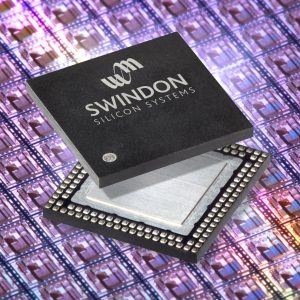ASICs offer protection against obsolescence

Custom ICs can replace and surpass the functionalities of obsolete chips
For many manufacturers, receiving an obsolescence warning for integrated circuits (ICs) can raise alarm. Faced with the prospect of potentially having to cut production runs short, leave existing customers unsupported, or search for replacement chips on the market, obsolescence can be a tricky problem to solve. But turning to custom IC design could be the answer, as Richard Mount, Director of Sales at ASIC design and supply company Swindon Silicon Systems explains.

For example, if the sales volume of an off the shelf IC drops below a certain level, it may no longer be financially attractive for the manufacturer to continue to produce the chip — another route to obsolescence. In this instance, it’s typical for a production end date to be set, and a last time buy (LTB) will be offered. The LTB may only offer only a limited supply of chips, however, for products nearing the end of their lifecycle, this may be an adequate solution.
Of course, reliance on an LTB is not ideal. There may not be sufficient chips available to support manufacturing requirements for the longevity of the host product. The initial upfront cost of purchasing the lifetime requirement may be financially restrictive along with the long-term storage costs, which can add up significantly over time. There is also the potential risk of the LTB proving to be over or under the actual demand required, thus providing another financial hit to the business.
If an alternative off the shelf chip is sourced, the performance may not be adequately similar to the original. This may then have repercussions in expensive design effort on the surrounding electronics, in order to make the product backward compatible.
So, what can be done in this instance, and how can manufacturers go about finding replacements for obsolete chips?
Replacing obsolete ICs
The first step is to calculate the future volume requirements of the chip being made obsolete and to ascertain whether an LTB is the correct action. It could be that the chips can be replaced by the original chip manufacturer, or a trustworthy distributor. Purchasing spare parts from other third-party suppliers is possible, but it’s important to take care that these chips both meet the high standards of quality required and are compatible with your existing system.
But what about when these approaches aren’t viable, or for applications that can’t afford a potential variance in performance? Fortunately, there’s another option available. This comes in the form of an Application Specific IC, or ASIC.
An ASIC, put simply, is a bespoke chip that has been designed precisely for its destined application. Taking a custom design approach means that an ASIC can offer many benefits over a standard IC, including improved performance and reduced power consumption.
Why choose an ASIC?
In the case of a chip becoming obsolete, an experienced ASIC designer will be able to replicate the functions of the old chip onto an ASIC. This may be completed on a similar silicon process or a more modern process with higher speeds, depending upon the age of the obsoleted part and when it was first designed. This offers an ideal route for manufacturers with products still early in their lifecycle, as well as those in critical sectors that need a high-quality, guaranteed chip supply over a prolonged period. With the ability to replicate the design and performance, it’s possible for the new chip to offer all the benefits of ASIC design while fulfilling the requirements of the original IC.
Where notification of obsolescence has been given at short notice, the time taken for ASIC design and development can be an area of concern. This can be approached in a two-stage process where an LTB is purchased along with the commencement of a replacement ASIC development. If the original schematics are available, then this could possibly simplify and shorten the design phase. ASIC engineers can also make use of existing circuit-block IP as part of their design, streamlining the process and shortening the timeframe between specification and production, thus reducing the LTB requirements and subsequent cost.
Non-obsolescence protection
ASICs are designed with non-obsolescence in mind. The two main components that typically can become obsolete are the silicon process and the packaging. With the latter, it’s typically easy to find an alternative and the change can be made with only a potential requalification process to be completed by the ASIC supplier and the customer. The silicon process, however, requires a little more thought, and an experienced ASIC designer will be able to advise on the right choice. The primary factor is to choose a silicon process that can meet the performance criteria while also matching the availability requirements of the end product, ultimately satisfying performance, maturity and longevity needs.
In the unlikely case that process obsolescence does come sooner than calculated, the ASIC supplier will typically receive around two years’ notice from the foundry, giving both supplier and manufacturer ample time to find a solution. This could include porting the design onto a new silicon process altogether. However, this occurrence is rarely seen in the ASIC world.
As in the case of standard ICs, purchasing an LTB of fully packaged chips is another option here, but it’s also possible to purchase an LTB supply of wafers instead. These can be stored in dry nitrogen cupboards for up to 30 years, allowing the ASIC supplier to fulfil orders as and when required. Cost is another advantage, with the commercial outlay of an LTB supply of wafers often much lower than that of complete chips.
Regardless of the route taken, it’s crucial that the customer is involved early in the decision-making process, receiving constant guidance from the supplier. This ensures a complete non-obsolescence plan right from the start of the ASIC design process, and means manufacturers face significantly lower risks of being left without supply or unexpectedly needing to fund an LTB outlay of chips over the product lifetime.
Component obsolescence is not an ideal situation for any manufacturer, but solutions are available. By turning to custom IC design, producers are offered not only a replacement chip in a time of need, but a chip designed to last a lifetime.
With more than 50 years of experience in the design and supply of high-performance, cost-effective ASIC solutions for the automotive and industrial sectors, Swindon Silicon Systems has the technical expertise to offer a market-leading solution for your ASIC application.












